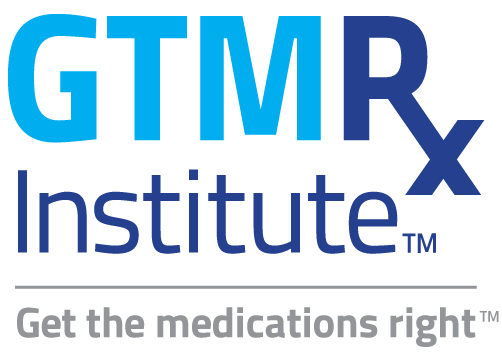 By: Marcia Buck, PharmD, FCCP, FPPAG, BCPPS
By: Marcia Buck, PharmD, FCCP, FPPAG, BCPPS
Director of Clinical Practice Advancement
American College of Clinical Pharmacy
November 17, 2021
Rigorous research, robust insights: 2021 GTMRx Evidence Document represents significant changes in how we assess CMM
The forthcoming 2021 GTMRx Evidence Document is currently being finalized by the Evidence Based-Resources Subgroup of the GTMRx Practice and Care Delivery Transformation Workgroup. In part 1 of a two-part blog, subgroup member Marcia Buck, PharmD, FCCP, FPPAG, BCPPS, director of clinical practice advancement at the American College of Clinical Pharmacy, discusses how the nature of the research has changed and explains how CMM differs from disease-state management. In part 2, she’ll delve into some of the studies in the context of the Quadruple Aim.
Defining our terms: CMM vs disease-state management
The GTMRx Evidence-Based Resources Subgroup released our first evidence document in October 2020. As the group works to evaluate and identify the most relevant research to support our belief in the value of CMM, we are becoming more deliberate in our evaluation to ensure that the studies highlighted explicitly focus on CMM rather than disease-state management programs or other types of medication management. There are significant differences.
First, let me acknowledge that CMM does provide disease-state management because the CMM team looks at every disease. The difference is that they’re looking at the patient as a whole, not merely as someone with a specific condition.
To explain this, let me borrow a little bit of language that Mary Roth McClurg, one of the primary investigators in the CMM in primary care research study, gave us early on in our work: “comprehensive and holistic.” I really like those terms together because I think that’s what differentiates CMM from traditional medication management programs. Rarely do patients come in with just one disease state and just one goal for their own health. It’s really necessary to look at the whole, including the impact of patient factors like social determinants of health, health literacy and understanding of their treatment goals. CMM looks at every chronic condition, rather than one disease state in isolation, and incorporates every part of the patient’s health care.
This means the CMM pharmacist is providing disease-state management but doing it in a much larger context.
Disease-state management has a specific set of goals to achieve. It’s useful, but there’s so much more we can do, and CMM offers the solution to that. Again, it’s about getting to the goal of achieving medication optimization: the optimal medication regimen paired with optimal medication use by the patient. Medication optimization requires use of a consistent patient care process and integration and coordination of the patient care team. Only then will we have an optimal regimen that the patient can use as intended. That’s what CMM entails, and that’s how we achieve patients’ goals for their overall health, not just an isolated disease.
As we near the release of our updated GTMRx 2021 evidence document, I am mindful of what a difference a year can make! While the pandemic initially delayed the completion and publication of clinical research in many institutions, this year we are finally seeing a significant number of new studies in the medical literature. As a result, we are making significant changes from the 2020 edition. I’d like to point out three areas in particular:
1. More rigorous, robust research around value/outcomes
We’re seeing much more robust research supporting the value of CMM in practice. For example, we’re seeing larger scale studies with more multi-center, state-wide or national collaborations like the Veterans Health Administration. Researchers are also evaluating larger patient populations, giving their results greater importance. Many of these studies include a comparison group, either a historical cohort before CMM was implemented or a similar clinic at the institution or health care system that hasn’t yet implemented it.
In contrast, last year, we saw mostly descriptive reports: These papers came from providers and pharmacists describing their own practice. That was very helpful information. It was good for practices or clinics wanting to implement CMM to see how to set up their practice, what it took to get CMM going, how many patients they were seeing and what quality and productivity metrics were being collected. While valuable to have in the medical literature, these papers alone aren’t adequate for demonstrating the benefits of CMM. Now we’re seeing data comparing CMM to other medication management strategies for not just diabetes and hypertension, but also asthma, chronic obstructive pulmonary disease, congestive heart failure and mental health. In addition, we’re finding papers incorporating novel techniques for providing CMM, with incorporation of artificial intelligence to aid in identification of high-risk patients or potential drug interactions or the use of telehealth modalities to provide CMM. The papers we’ve added to the 2021 Evidence Document update will provide our users with better evidence of the efficacy of CMM in practice.
2. More data on increasing patient access to care
This one took me by surprise. What we’re seeing is that while it is important that we continue to capture data to support the role of CMM in improving the quality of care by helping patients meet their health care goals and get their hemoglobin A1C and their blood pressure to goal, we’re also seeing more papers showing the importance of CMM in helping clinics and practice sites to increase efficiency, which in turn increases patient access to care. We’ve been seeing really impressive data from the Veterans Health Administration on the impact of CMM on increasing veterans’ access to care by reducing the provider workload, but now we have this benefit confirmed in studies conducted at other types of practice sites. This is a really important finding, especially for practices treating underserved patient populations, whether rural or lacking financial support for care.
3. More assessments of the impact on the care team
Recent research has also provided more information about the impact of the addition of a CMM clinical pharmacist on the rest of the patient care team. The first Evidence Document included just one small survey of provider response to the implementation of CMM in their practice, but it was incredibly important information to share with our readers. It revealed that providers not only benefitted from the reduction in their own workload, they also valued the professional collaboration and shared mission, resulting in less burn out and an improved work-life balance. The update will include two more papers, both with much larger numbers of respondents. Interestingly, these papers found very similar results to the first, with rates of satisfaction with the work of the clinical pharmacists over 90%.
These new studies provide valuable information as we work together towards the goal of expansion of and access to CMM services. While it’s great to say that CMM is helping patients meet their treatment goals, it’s even better to have the data to support the role of CMM in helping the patient care team in their goal to achieve all four areas of the Quadruple Aim: improving patients’ health, reducing health care costs, improving the patient’s care experience and improving health care team members’ work-life.
In part 2, we’ll look at some of the specific evidence of how the CMM process supports medication optimization and meets the goals of the Quadruple Aim: Provide better care, reduce health care costs, improve the patient experience and improve clinician well-being.
Other members of the Evidence Based-Resources Subgroup of the GTMRx Practice and Care Delivery Transformation Workgroup:
Shawn McFarland, PharmD, FCCP, BCACP, National Clinical Pharmacy Practice Program Manager, Clinical Practice Integration and Model Advancement, Clinical Pharmacy Practice Office, Pharmacy Benefits Management Services, Veterans Health Administration
Lori Armistead, PharmD, MA, Senior Research Associate, Clinical Coordinator, Center for Medication Optimization, University of North Carolina School of Pharmacy
Judith Jacobi, PharmD, FCCP, MCCM, BCCCP, Senior Consultant, Visante Inc.
Mary Ann Kliethermes, PharmD, FAPhA, FCIOM, Director, Medication Safety and Quality, Office of Practice Advancement, American Society of Health-System Pharmacists
Related resources:

